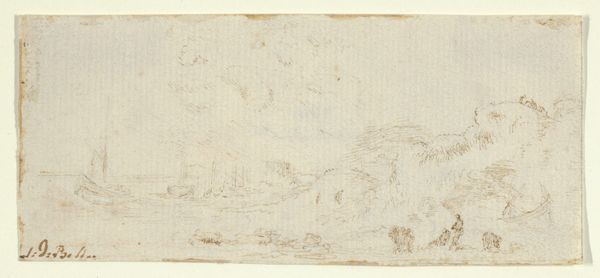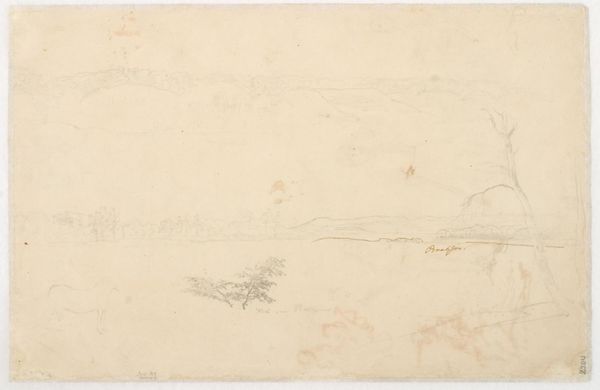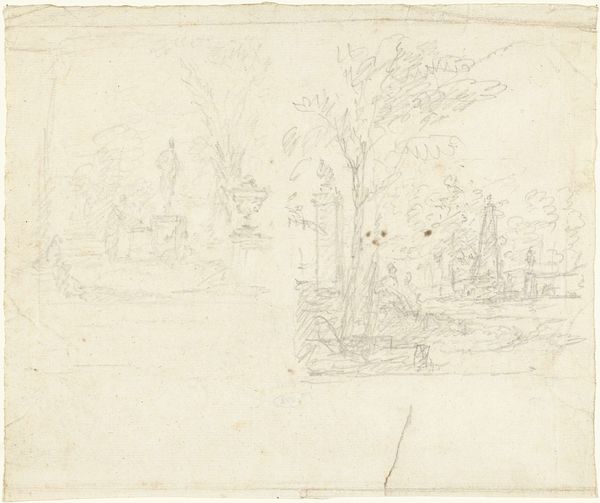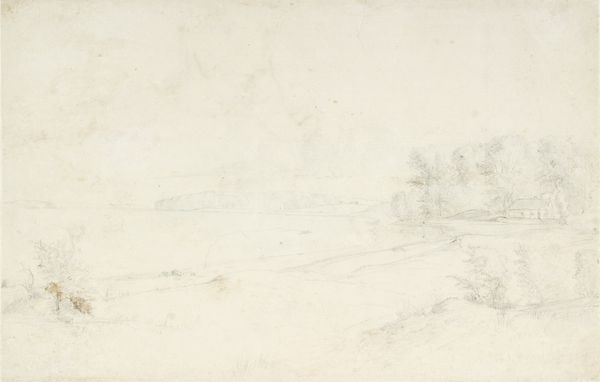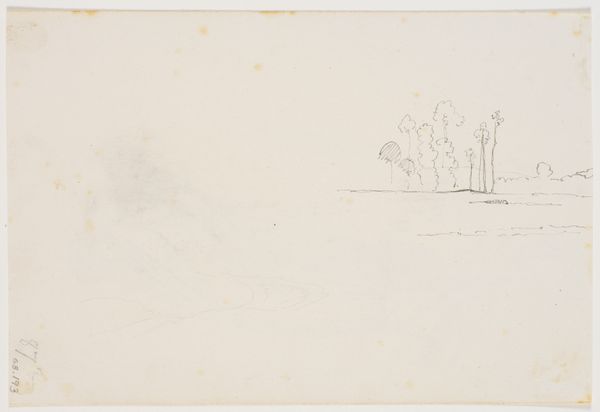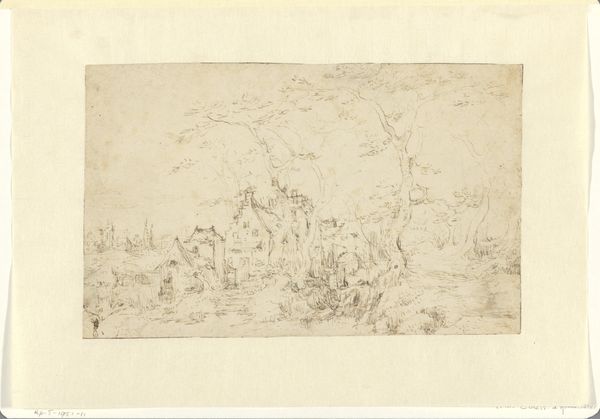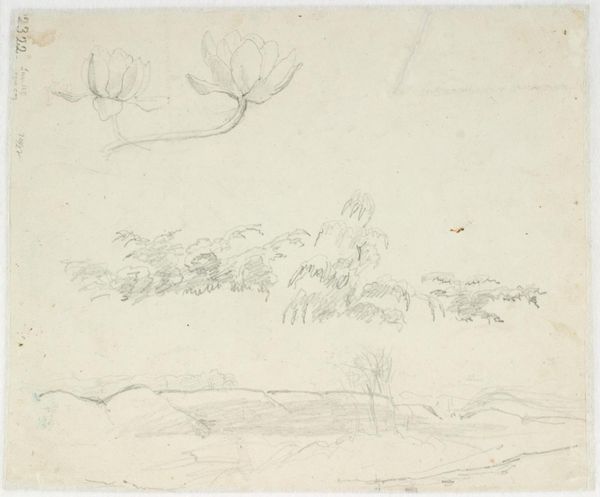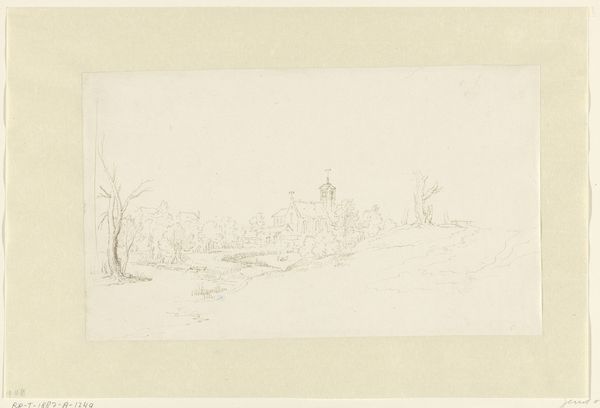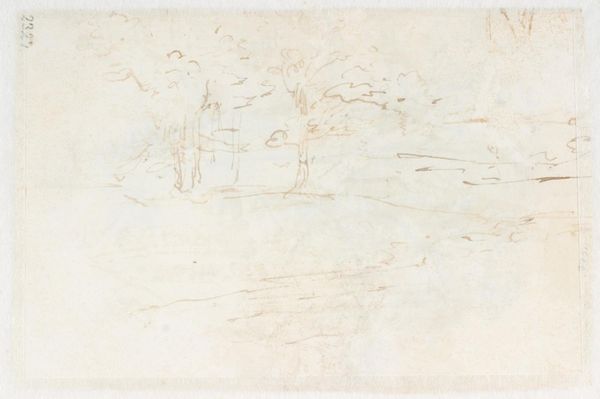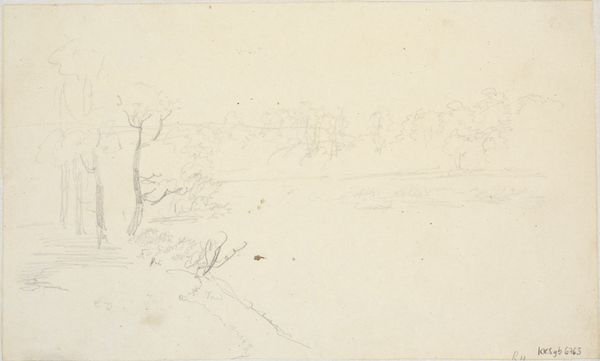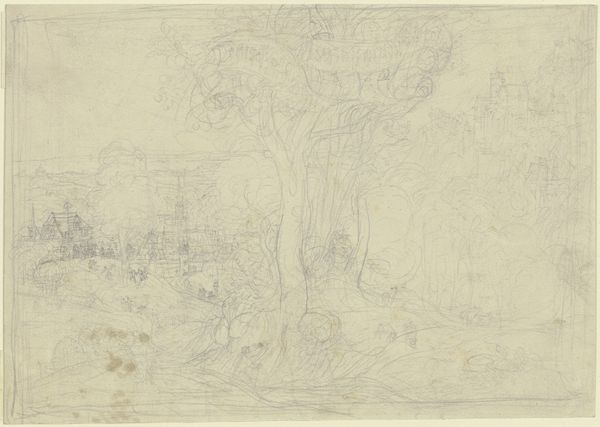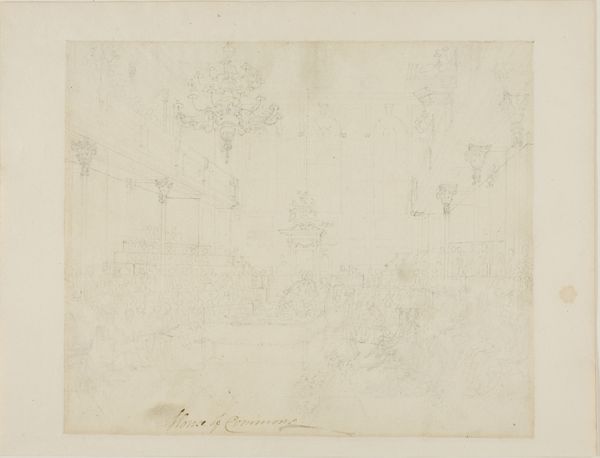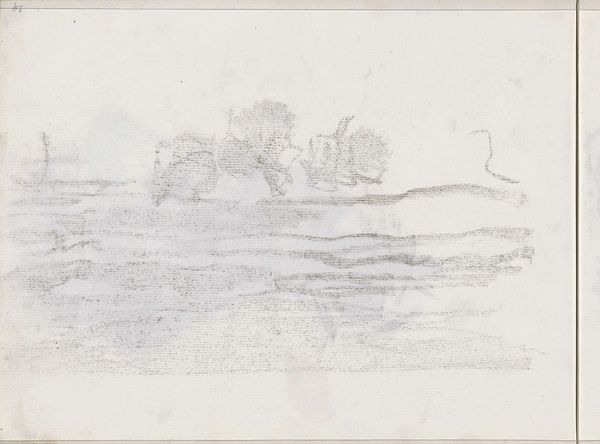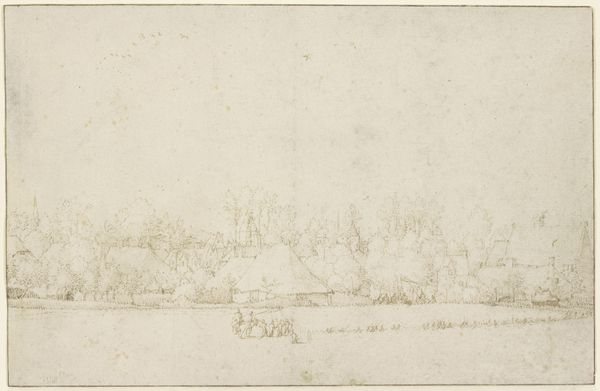
drawing, pencil
#
drawing
#
light pencil work
#
incomplete sketchy
#
landscape
#
pencil
#
line
#
realism
Dimensions: height 245 mm, width 355 mm
Copyright: Rijks Museum: Open Domain
Curator: This subtle pencil drawing, titled "Sketch of a landscape with a farm between the trees," was created by Cornelis Steffelaar sometime between 1807 and 1861. It captures a serene pastoral scene, doesn't it? Editor: It feels almost ghostly, a memory barely clinging to the paper. There's a haunting quality to it, perhaps reflecting the social upheaval happening during that period. The fragility of the lines echoes the precariousness of rural life being encroached upon by industrialization. Curator: That’s an interesting point. The period indeed saw significant societal changes, including industrialization's impact on agrarian landscapes. Steffelaar's work, though seemingly straightforward, often engages with the shifting perceptions of nature and rural life amidst such transitions. Editor: Precisely. Consider the way the trees frame the farm; they simultaneously shelter and confine it. It makes me think about land ownership, power dynamics, and who controls access to these resources during that era. Was this idealization, or was Steffelaar signaling an underlying unease with societal changes? Curator: It's likely both. Many landscape artists then sought to depict an idealized vision of rural life while simultaneously responding to, or even critiquing, social changes through their work. We need to consider the patronage, the art market, the social values reflected, or contested, in similar works during his time. It reflects an idealized yet quietly unsettling portrait. Editor: The very medium—pencil on paper—speaks to accessibility. This isn't an oil painting for the elite. It's a sketch, an observation available for wider circulation, hinting at a democratization of landscape viewing, but also raising questions about who gets to define and represent rural space. Curator: I hadn't considered that angle, but it’s vital. It serves to prompt discourse on accessibility and power relative to art in public spheres. Editor: Looking at this again, I am struck by its quiet resistance to romanticizing the rural idyll completely. Curator: Agreed, a closer viewing truly brings to life multiple interpretations. It’s fascinating how a simple pencil sketch can encapsulate such rich historical and contemporary dialogues.
Comments
No comments
Be the first to comment and join the conversation on the ultimate creative platform.
